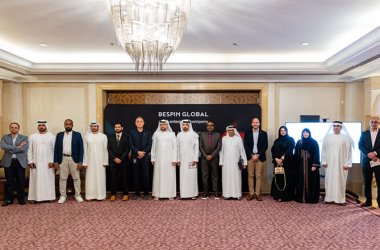Virtual replications of products, people and processes are beginning to make significant headway in a number of industries. With Gartner predicting that billions of things will be represented by digital twins within three to five years, how can enterprises look to leverage their capabilities to create business value?
A digital twin is essentially a software model that uses sensor data to mirror a machine or series of processes within a business, in order to reveal which adjustments are needed to result in further business value. By implementing this throughout the concept to production process, businesses can reap a whole host of benefits, from saving time and costs, to bringing products to market quicker and at a higher quality. It can be used in product design, simulation, monitoring, optimisation and servicing, and is an important concept in the industrial Internet of Things (IoT).
This description may sound like heightened version of CAD technology, but a digital twin brings much more to the table than its counterpart. Until very recently, their usage has mainly been constrained to high-value assets, such as jet engines. But since being named in Gartner’s top 10 strategic technology trends for 2017, the concept is currently on the brink of explosion in more low-end applications, like autonomous vehicles and manufacturing.
“Digital representations of devices, systems and processes break down the boundaries of the physical world, and make it possible to use the power of cloud computing, predictive analytics and artificial intelligence for gathering deeper insights into collected data.” – Necip Ozyucel, cloud and enterprise business solutions lead, Microsoft Gulf
Digital twins provide companies with the ability to model and manage the complexities that are so inherent in many products today. A product’s embedded software creates customisable processing capabilities, which require complex manufacturing processes, supply chains and extended value chains to design, develop, produce and service.
“Take the example of a car,” says Assem Khalaili, executive vice president, Industry Consumer Services, Siemens Middle East. “We can use software to design how a car will look, of course, but we would then use the digital twin to virtually test how individual parts – and the final product – will operate under real-world conditions.”
Citing this technology, Khalaili highlights how Siemens’ work in partnership with Maserati, using the digital twin to design and build the new Ghibli, enabled the company to bring the car to market in just 16 months, while simultaneously reducing development time by 30 percent and tripling production output.
“The beauty of the digital twin is that it is virtual, which allows us to position it anywhere in the world.” – Assem Khalaili, executive vice president, Industry Consumer Services, Siemens Middle East
The automotive industry is just one example of how this technology is beginning to impact manufacturing processes today. Aviation companies are also getting on board and adopting variations of the sort in a bid to reduce costs and enhance asset management capabilities.
“For training purposes of jet engines in Japan Airlines, instead of buying the actual jet engines for different locations, Microsoft’s HoloLens is being used to create a virtual replica of the engine, taking full advantage of this mixed reality concept,” says Necip Ozyucel, cloud and enterprise business solutions lead, Microsoft Gulf.
This highlights the fact that a digital twin doesn’t have borders; two people working on the same project can be in two completely different locations, and still expect the model to operate seamlessly. The software operates on a cloud-based platform, making it easily accessible for international companies with various bases. “The beauty of the digital twin is that it is virtual, which allows us to position it anywhere in the world,” adds Khalaili.
When looking at the adoption of digital twin software in the Middle East, General Electric (GE) is heavily invested in developing the industrial IoT, and recently rolled out the first digital smelter solution in collaboration with Aluminium of Greece (see page 14) – demonstrating another valuable industry for the use of digitised companions. While the smelter base will not be situated in the Middle East, the execution of the solution will be carried out in Dubai at GE’s Centre of Excellence. The company is hopeful that once they have achieved tangible results from the project, they will be able to implement similar smelter solutions in the region.
“The Middle East is on the verge of a massive digital disruption,” says Ozyucel. “By 2019, projections estimate that the MEA region will have the world’s highest cloud traffic growth rate at 41 percent, and by 2020 it is thought that there will be 2 zettabytes of data in the Middle East – greater than the estimated number of grains of sand covering the entire Arabian Desert.”
This collaboration of cloud computing, data explosion and enhanced intelligence is enabling organisations to achieve more through the creation of these ‘device shadows.’ Ozyucel adds, “Digital representations of devices, systems and processes break down the boundaries of the physical world, and make it possible to use the power of cloud computing, predictive analytics and artificial intelligence for gathering deeper insights into collected data.”
But where do we draw the line? Is it necessary for all physical things or systems to be represented by a digital identity? The answer in short, is no – for the time being at least. However, as IoT grows year after year, it is becoming easier than ever to connect a whole range of devices to the Internet and collate such data. “In 2020, there will be one million new online devices per hour,” says Ozyucel. “This clearly reveals the power of the IoT network, which will aid enterprises in resource and process optimisation, and increase situational awareness through collected data.”
“Looking ahead, it’s also possible to use the data from digital twins for additional services, such as predictive maintenance,” says Khalaili. “This is evolving technology, and I would expect to see that it begins with complex industries with high technology dependence, and in time it will trickle down to less complex industries.”
Before too long, we will surely soon be seeing digital replications of ourselves. In an interview with Business Insider back in 2014, John Smart – futurist and founder of the Accelerations Studies Foundation – said, “When you and I die, our kids aren’t going to go to our tombstones, they’re going to fire up our digital twins and talk to them.” It’s not actually such a far-fetched idea when you think about it. Thousands of Facebook profiles are kept alive by family members after a loved one has passed. People are already forming relationships with online presences, in the same way they do with Microsoft’s Cortana and Apple’s Siri.
In the short term at least, IDC predicts that by 2018, companies investing in IoT-based operational sensing and cognitive-based situational awareness will see a 30 percent improvement in the cycle times of impacted critical processes. And, while the concept of digital twins has already made waves in automotive and high-tech manufacturing industries, its ability to provide value in almost any industrial environment is quickly being realised.





